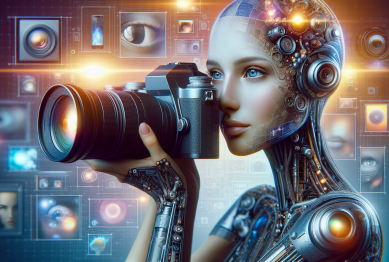Despite living in the most connected era in human history, many people are reaching back—toward film cameras, vinyl records, paper books, and handwritten notes. The trend may seem contradictory, but it’s anything but random. As hyper-digital lifestyles become the norm, people increasingly crave analog in a digital world as a form of balance, escape, and authenticity.
This shift isn’t just aesthetic—it reflects deeper cognitive and emotional needs being ignored by always-on, pixel-based technologies.

Why the Digital World Isn’t Enough
Smartphones, smartwatches, and AI-powered everything have made life more efficient—but also more anxious. A 2022 Pew Research Center survey found that 64% of Americans feel technology makes it harder to unplug and contributes to stress. Even tech professionals are reporting “screen fatigue” and searching for more tactile, focused experiences.
This growing discontent is why we crave analog in a digital world—we’re looking for experiences that slow us down and make us feel grounded.
The Science Behind Analog Cravings of Digital World
Tactile Engagement Promotes Better Focus
Holding a pen, flipping pages, or dropping a needle on a record gives the brain more sensory data than digital interfaces. This sensory richness improves memory retention and enhances emotional connection. According to a 2021 study in Frontiers in Psychology, people who handwrite notes demonstrate better learning and conceptual understanding than those who type (Mueller & Oppenheimer, 2021).
Analog Lowers Cognitive Load
Digital tools bombard us with alerts, options, and interfaces. Analog systems are simpler and more predictable. Using a paper planner instead of an app reduces decision fatigue and can improve follow-through. Minimalism isn’t just aesthetic—it’s neurological.
Where the Analog Revival Is Happening in Digital World
Across industries and hobbies, analog is experiencing a very real resurgence:
1. Vinyl Records
The Recording Industry Association of America (RIAA) reported in 2023 that vinyl sales hit their highest levels since 1988—surpassing CD sales for the first time in decades. Listeners are gravitating toward the ritual and richness of analog sound.
2. Film Photography
Companies like Kodak and Fujifilm have resumed production on classic film stocks due to renewed demand. Instagram influencers and professional photographers alike are using film for its aesthetic and intentionality.
3. Physical Books and Journals
In an era of eBooks and tablets, paper book sales continue to rise. According to NPD Group, print book sales in the U.S. grew by over 9% in 2021. Journaling is also resurging as a mindfulness practice.
4. Analog Tech in Offices
Some startups and creative teams are banning laptops from brainstorming sessions and encouraging sketching or whiteboarding instead. Many cite better idea generation and reduced distraction as the reason.
Why We Crave Analog in a Digital World: The Psychological Pull
Realness in a Digital Landscape
As more of life moves online—work, relationships, even identities—the appeal of the tangible grows. Analog provides what digital often lacks: friction, imperfection, and physicality. These traits make experiences feel more human.
Nostalgia Meets Novelty
For younger generations, analog isn’t retro—it’s refreshing. Gen Z, born into digital, are turning to analog as a form of rebellion. For older generations, it’s nostalgia. Either way, the emotional payoff is strong.
Reclaiming Attention
In a hyper-connected digital space, analog tools force you to slow down. Writing with a pen takes longer than typing. A turntable doesn’t allow you to skip tracks with a tap. This friction becomes a feature, not a bug.
Integrating Analog Into a Lifestyle from Digital World
You don’t need to go full-Luddite to benefit. Here’s how to integrate analog intentionally:
- Use a paper notebook for brainstorming. Creativity often flows better when you’re not battling autocorrect.
- Switch to print for long reading sessions. Reduces eye strain and boosts retention.
- Take digital breaks with analog hobbies. Try drawing, vinyl listening, or handwriting letters.
- Limit screen time in key routines. Morning and evening rituals benefit most from being tech-free.
- Print out key work materials. Physical copies can reduce fatigue and help with spatial memory.
What This Means for Digital Analog and Design Trends in Digital World
Tech companies are paying attention. We’re seeing more “digital analog” products—apps that mimic physical experiences or devices designed to feel more tactile. E-ink devices like the reMarkable tablet aim to replicate paper, while apps like Notion and Apple Notes now include handwriting and sketching features.
In hardware, there’s a push toward products that are slower, simpler, and designed to be used with intent. Even digital detox products, like minimalist phones and screen-free MP3 players, are on the rise.
Conclusion
In a world ruled by algorithms and automation, analog offers something unique: presence. The analog revival isn’t anti-tech; it’s pro-human. As we continue to blend the digital and physical, the need for tactile, grounded experiences will only grow stronger.
We crave analog in a digital world not because technology has failed—but because humans need more than efficiency. We need depth, texture, and time to think.
References:
- Pew Research Center (2022) ‘Technology and the Future of Well-being’. https://www.pewresearch.org/internet/2022/05/25/technology-and-the-future-of-well-being/
- Mueller, P.A., & Oppenheimer, D.M. (2021) ‘The Pen Is Mightier Than the Keyboard’, Frontiers in Psychology, 12, article 647190. https://pubmed.ncbi.nlm.nih.gov/24760141/
- RIAA (2023) ‘2023 Year-End Music Industry Revenue Report’. https://www.riaa.com/reports/2023-year-end-music-industry-revenue-report-riaa/









